All you need to know about Polygon (Matic Network)
The Matic Network is a platform designed for Ethereum scaling and infrastructure development. Recently, the project was rebranded to Polygon, but the trading ticker remains as MATIC. This Layer 2 scaling solution is backed by Binance and Coinbase and is […]
The Matic Network is a platform designed for Ethereum scaling and infrastructure development. Recently, the project was rebranded to Polygon, but the trading ticker remains as MATIC. This Layer 2 scaling solution is backed by Binance and Coinbase and is already used by many projects like Aavegotchi and others.
What’s the difference between Polygon (Matic Network) and the Ethereum Network?
It’s crucial to understand that Polygon is a protocol built for connecting Ethereum-compatible blockchain networks. It is not a new kind of Ethereum, it’s a project aimed at improving the current Ethereum ecosystem by providing higher throughput and dealing with the high gas fees.
Ethereum, on the other hand, is the main blockchain that features smart contracts functionality. Polygon combines the best of ETH with other blockchains into one adding even more security and a better user experience.
How to Set up Polygon (Matic Network) on Metamask
In order to set up your MetaMask for the Matic mainnet, you will need to add a custom RPC. First, click on the Network Selection button at the top of the MetaMask app.

Now click on Custom RPC, found at the bottom. You will need to add the required information as shown below:
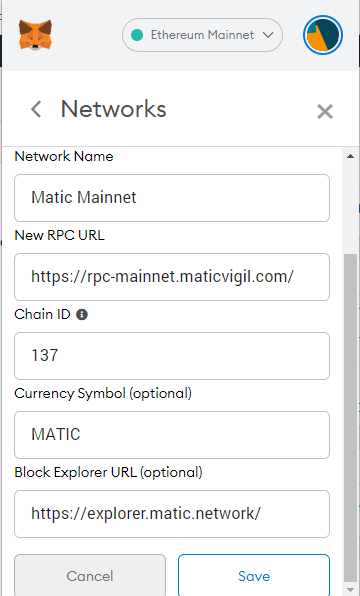
Network name: Matic Mainnet
New RPC URL: https://rpc-mainnet.maticvigil.com/
Chain ID: 137
Currency symbol: MATIC
Block Explorer URL: https://explorer.matic.network/
Now you will be able to switch back and forth to the Matic network or Ethereum network whenever you need to.
Advantages of Polygon
Polygon aims to diminish gas fees and increase transaction speed. All transaction fees on Matic sidechains are paid in MATIC tokens which are significantly lower than on Ethereum. Additionally, Polygon offers scalable and instantaneous transactions and each Matic sidechain can theoretically achieve 2^16 transactions per block.
The protocol has achieved up to 7,000 TPS on a single sidechain on an internal testnet. This is significantly higher than the 14 per second Ethereum can achieve.
One of the first and most successful projects to launch on Polygon has been Aavegotchi, a DeFi cryptocurrency collectibles game. The blockchain game created by Aavegotchi was launched on Polygon and aims to become the most innovative DeFi and NFTs in existence.
The biggest benefit is fixing scalability and high gas fees which would make the Aavegotchi game practically unusable on Ethereum.
Polygon Price Prediction: MATIC aims for $1 in the long-term
Polygon price has just hit a new all-time high on February 10 at $0.1469. The digital asset reached a market capitalization of $630 million which is notably low considering coins like Dogecoin have managed to touch $10 billion.
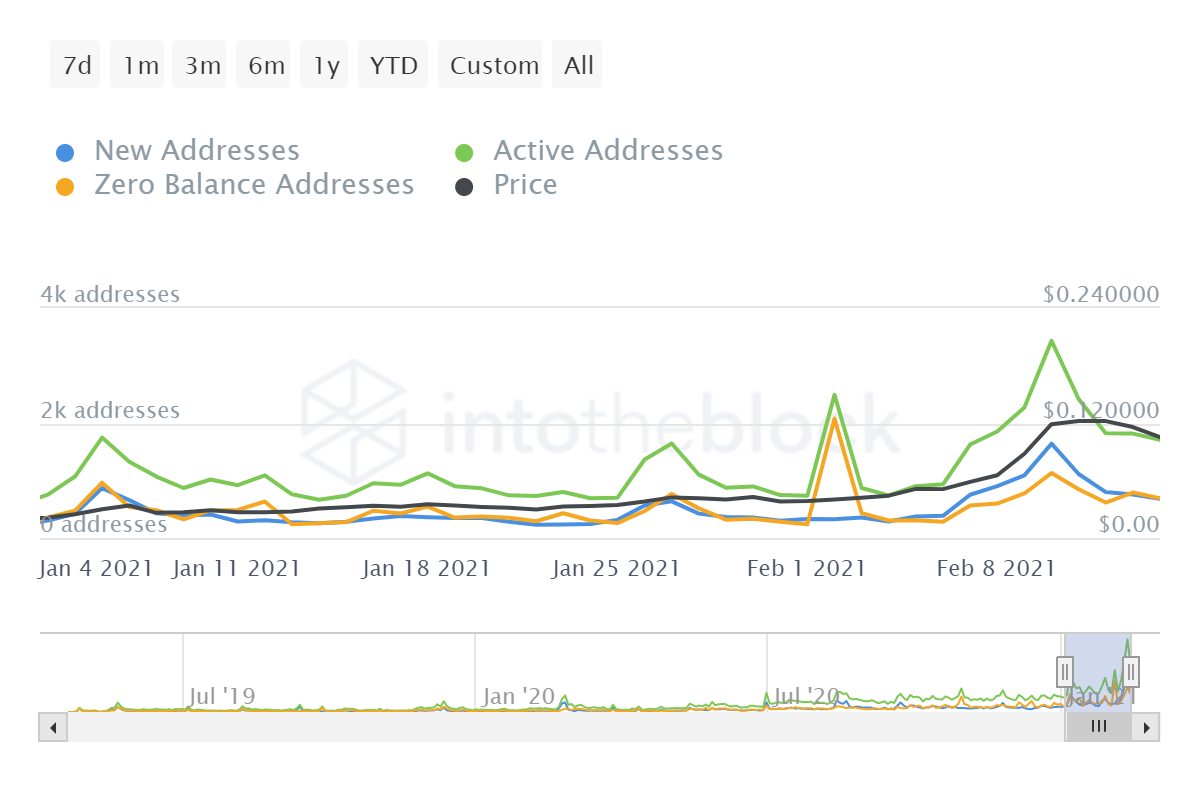
In the past two months, the activity of Polygon has increased significantly with several major spikes in the number of new addresses joining the network and the amount of active addresses. This on-chain metric indicates that the project is gaining a lot of interest from investors.
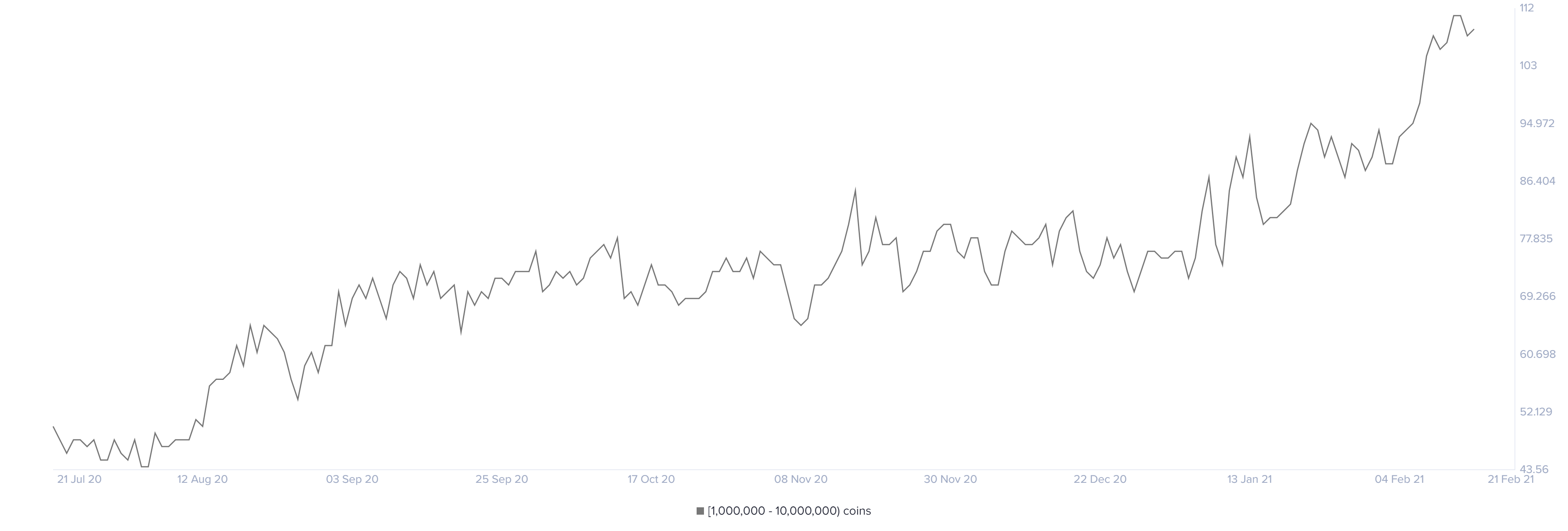
Even more significant is the number of whales joining MATIC. Since August 1, 2020, the amount of whales holding between 1,000,000 and 10,000,000 coins ($100,000 and $1,000,000) has increased from 48 to 111 currently.
From a market capitalization point of view, MATIC can certainly reach higher highs. The current capitalization is around $530 million, ranked 80th on CoinMarketCap. In comparison, Ethereum’s market cap is about $210 billion, a colossal difference.
Obviously, we can’t pretend that MATIC will simply reach the same market cap, but even at 1% of the current Ethereum’s cap, MATIC price would hit $0.4. The $1 figure is clearly possible and would only put MATIC’s market capitalization at $5 billion.
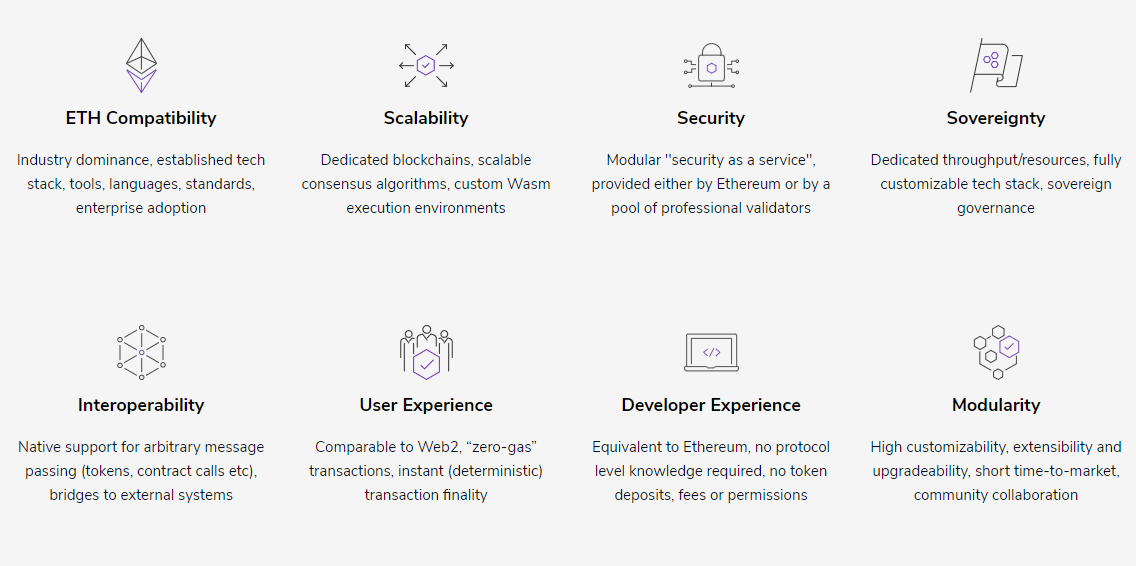
The potential use-cases of Polygon are numerous. Integrating MATIC payments to decentralized applications is extremely simple and better thanks to faster transaction speed and lower fees. It can also help tremendously with the speed of decentralized exchanges. The largest DEX today, Uniswap still suffers a lot when it comes to speed and insanely high gas fees.
There are many other use-cases for Polygon like atomic swaps, securing personal data, lending, and more.
If you are looking to buy MATIC, you have plenty of options from decentralized exchanges to giants like Binance. MATIC is also listed on Uniswap, BitMax, Poloniex, and many others. You have a wide variety of trading pairs available and good liquidity.
Polygon staking and delegation
In order to stake MATIC, you will need to delegate your tokens to a validator. Navigate to https://wallet-v1.matic.network/staking/ and log in using Metamask. Keep in mind that you will need to have your MATIC tokens and ETH on the Ethereum Mainnet network.
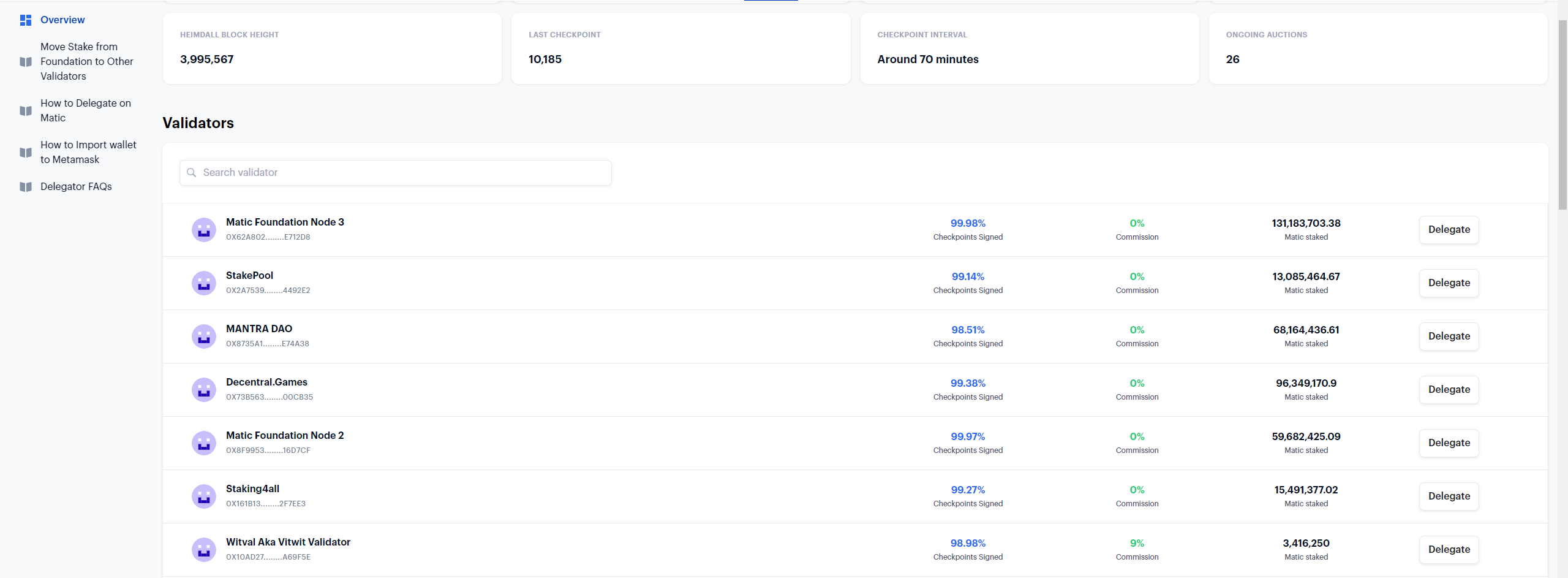
Once you are logged in, you will find a list of validators below. Note that each validator will have a different commission and percentage of checkpoints signed. Once you are happy with one, simply click on ‘Delegate’. At this point, you can choose the amount of MATIC tokens that you want to delegate. You will have to sign the transaction with your wallet and wait for 12 block confirmations for your delegation to be reflected on the dashboard.
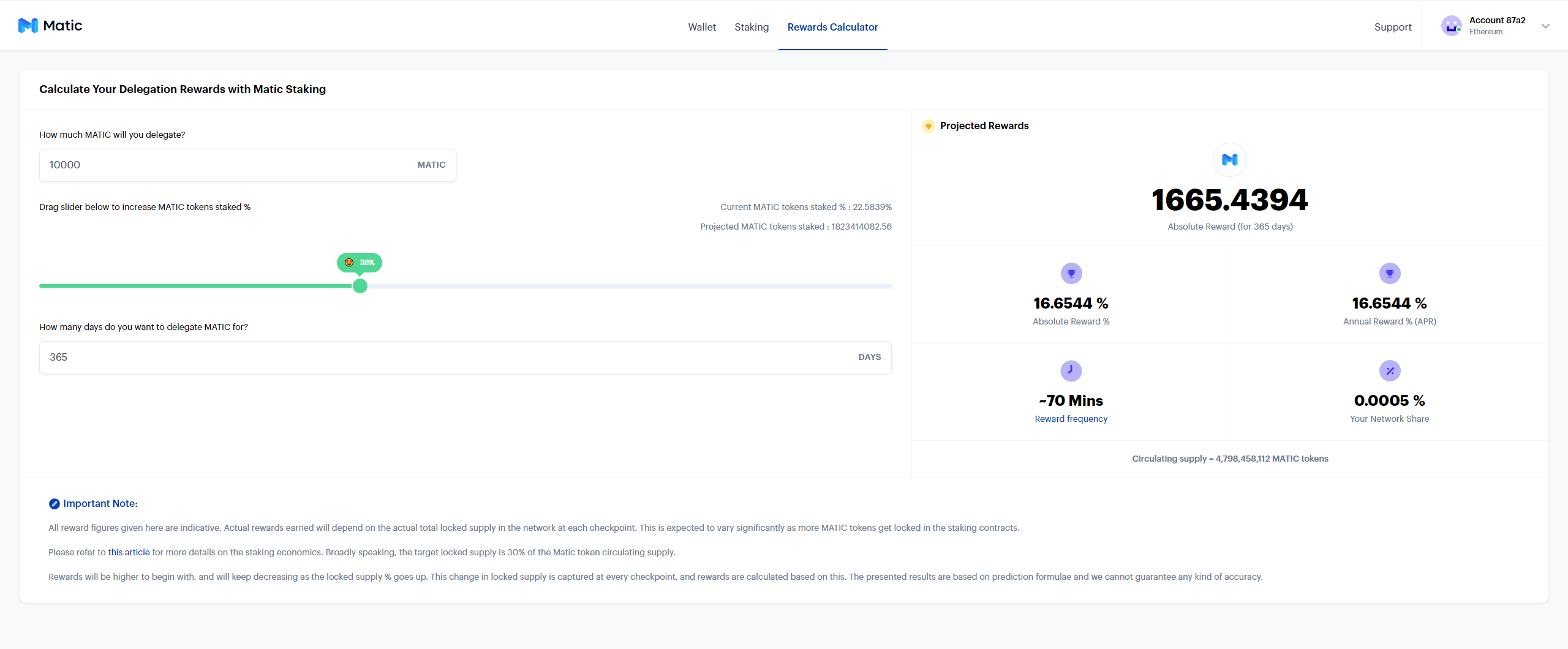
Before delegating, you can click on ‘Rewards Calculator’ to see the current APR. The annual reward depends mostly on the amount of MATIC tokens staked. Currently, around 22.5% of all MATIC in circulation is staked, if more get staked, your rewards are lower.

Robert Weiss
Cryptocurrency enthusiast and trader since 2016 with a passion to learn and improve every day. Professor in Economics and Mathematics.

























































